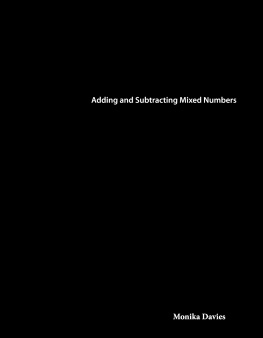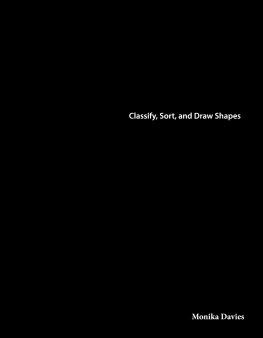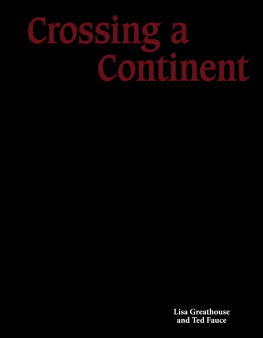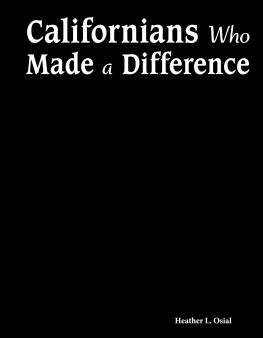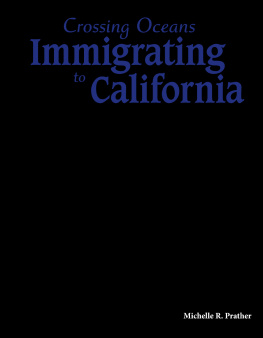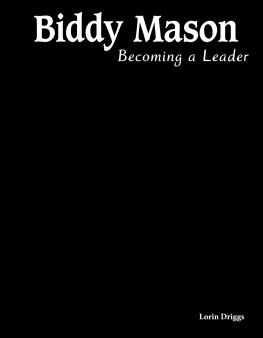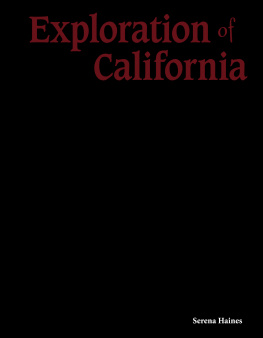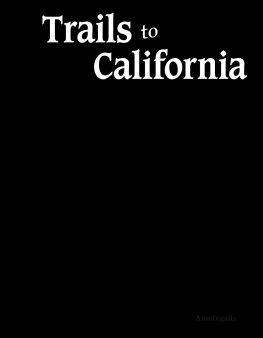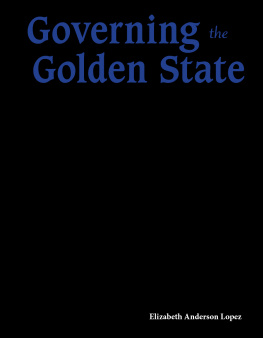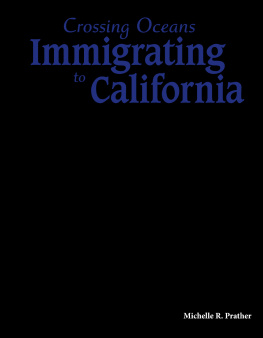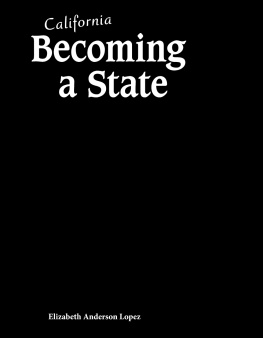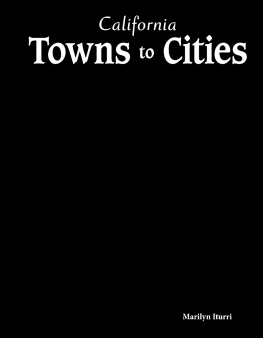0covercover.xhtmlThe Gold Rush Monika Daviescover1page0001page0001.xhtmlRead and Respond 1. What sparked the California Gold Rush? 2. Describe the life of a gold miner during the Gold Rush. 3. How were some groups of people discriminated against during the Gold Rush? 4. How did the Gold Rush change California? Explain the effect on cities, the environment, and population. 5. Many people made money during the Gold Rush without mining. If you lived back in California in 1849, what business would you have opened? Why? 6. Use the words "Gold Rush" to create an acrostic poem.22page0002page0002.xhtmlThe Gold Rush33page0003page0003.xhtml44page0004page0004.xhtmlTable of Contents Strike It Rich 4 Sutter's Mill 6 The Rush Is On 10 Changing Times 14 The Changing Landscape 22 The California Dream 26 Write It! 28 Glossary 30 Index 31 Your Turn! 3255page0005page0005.xhtmlStrike It Rich You are knee deep in the American River. Your hands clutch a pan. Rocks and sediment are piled inside. You swish, swish, swish the metal container back and forth, trying to shave off the top layer of soil. It's 1849. You are a miner during the California Gold Rush. You have been panning for gold for 12 hours. Your back aches. Your feet feel like ice cubes. But you keep going. You are hopeful that today is the day. Today will be the day you strike it rich. For many Gold Rush miners, these struggles happened daily. The Gold Rush brought big changes both positive and negative to California. Let's take a look at this golden age in California history. Eureka!
Have you ever looked closely at the California state seal? At the top is the state's motto, "Eureka. " In Greek, it means, "I have found it. " The motto refers to the discovery of gold in the state.66page0006page0006.xhtml
Gold Rush Slang It's time to brush up on Gold Rush vocabulary! "Gold washers" (miners) worked "claims" (mines) when they were on the hunt for "the yellow heap" (gold). Miners search for gold in rivers during the Gold Rush.77page0007page0007.xhtml
Oh My, Gold! About 750, 000 pounds (340, 000 kilograms) of gold were mined during the Gold Rush. Most of the gold was found in flakes and small nuggets. The largest gold nugget ever found weighed 195 pounds (88 kilograms)! It was found in 1854 in Carson Hill, California. first piece of gold found at Sutter's Mill Sutter's Mill On January 24, 1848, James Marshall was building a water-powered sawmill. The mill stood about 50 miles (80 kilometers) east of present- day Sacramento, California. Marshall had no idea he was going to play a pivotal role in history. As he looked at the American River, a twinkle in the water caught his eye. It was a golden flake that glittered with promise. "It made my heart thump, for I was certain it was gold, " Marshall said years later.88page0008page0008.xhtmlHe showed the flake to his crew. Then, he took his discovery to John Sutter, his boss. Sutter didn't want word to get out about the gold. He knew that people would flood his land in search of more gold. It would be a disaster. The two men pledged to keep the gold a secret. But the news didn't stay quiet for long. Sutter's Mill, 1848
Sutter's Colony John Sutter was from Switzerland. By 1839, he was facing grim money problems. He decided to leave his home for California. Once there, he was given a large plot of land. He started a colony named Nueva Helvetia (NWAY?vuh hel?VEE?shuh), which meant "New Switzerland. " He chose the name to honor his home country.99page0009page0009.xhtmlWord Spreads Whispers of gold on Sutter's land grew louder. Soon, locals were mining for gold. In April 1848, Sam Brannan explored the gold mines that had sprung up on Sutter's land. He was a businessman who started a newspaper, the California Star. The year before, he'd also opened a store in Sutter's colony. Brannan did not head into the mines for gold. Instead, he bought every shovel, pan, and pick axe he could find for his store. He knew miners would need supplies. One month later, on May 12, Brannan traveled to San Francisco. He walked into the streets, swinging a small bottle of gold flakes in the air. "Gold! Gold! Gold from the American River! " he shouted. His words sparked a frenzy. In weeks, many people left San Francisco. Men headed to the mines to "strike it rich. " Within a few years, Brannan became California's first millionaire. Sam Brannan1010page0010page0010.xhtml
Making Millions Brannan first opened a store at Sutter's Fort in 1847. Months later, he heard gold was found in Coloma. He opened a second store there. Some days, he made as much as $5, 000. That's equal to more than $120, 000 today! Eventually, he opened a third store. Brannan became one of the wealthiest land owners of his time.1111page0011page0011.xhtmlThe Rush Is On By 1849, news of the California Gold Rush had swept the nation. People living on the East Coast and in the Midwest made plans to move west. The westward migration began. People took big risks for the chance to find gold. Workers making limited wages saw the Gold Rush as a golden ticket to wealth. But, these hopeful miners had to get to California first. There were two ways to reach the West. The first option was to go by boat. From New York, it took six to eight months. The boat traveled around South America. People then landed in San Diego or San Francisco. The second option was to travel over land. From the Midwest, it was a journey of about 2, 000 miles (3, 200 kilometers). The route was along two trails. The first was the Oregon Trail. Then, it split off to the California Trail. The trip took three to six months. Both options were difficult, but people thought they were worth the risk!
Tough Trips The trip by sea around South America was very hard. There was little fresh water or fruits and vegetables. People often suffered motion sickness. Traveling over land took less time, but migrants had to be ready for any emergencies. There weren't many trading posts, and most people rarely had goods to trade.1212page0012page0012.xhtml1849 guide to the gold fields in California
Sutter's Fort to Sacramento For John Sutter, the Gold Rush spelled his ruin. His colony was overrun with fortune seekers. Under a mountain of debt, he deeded his land to his son. His son then turned the land into a new settlement called Sacramento. Sacramento, 18501313page0013page0013.xhtmlMigrants poured into California. At the end of 1848, around 5, 000 miners were looking for gold. In 1849, that number grew 10 times to 50, 000. The miners were called '49ers because of the year. They arrived in huge crowds. Most miners came from the Midwest and the East Coast. But, news of the Gold Rush reached beyond the borders of the United States. People also traveled from Europe and Asia to mine for gold. Everyone had the same golden dream, but a harsh reality greeted them. The myths about the Gold Rush described gold lining the riverbeds. It all sounded so easy. But mining was hard work. To find gold, rocks needed to be torn up. Miners had to wade into freezing rivers. They combed through dirt. They spent hours panning for gold. Their hands became raw and bloodied. They even lost their fingernails.
How to Pan for Gold 1. Pick a location where g old has been found. 2. Fill your pan with some promising soil and rocks. 3. Shake the mixture so th e gold settles at the bottom. (Remember, gold is heavy!) 4. Carefully swish the rock mixture so the top layers swirl out. (Slowly, though!) 5. Golden flakes should se ttle at the bottom of your pan. Eu reka!1414page0014page0014.xhtmlA miner pans for gold in the American River.1515page0015page0015.xhtmlChanging Times The Gold Rush changed California. But the years right before the Gold Rush were also a time of change for the state. The region had been a part of Mexico, but the United States wanted it. In 1846, the two countries went to war. They fought for two years. On February 2, 1848, they signed a treaty. California was now part of the United States. At almost the exact same time, gold was found at Sutter's Mill. Only nine days separated these two major events! Within a few months, thousands of people came to the state. Their lives would change forever. The lives of the people who already lived in the state would change, too. The first battle of the Mexican?American War was fought on May 8, 1846.1616page0016page0016.xhtml


